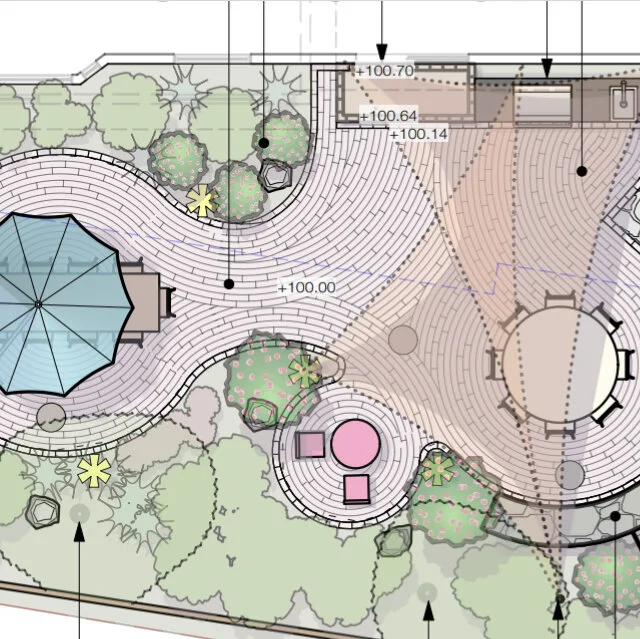The design principle of datum is commonly embodied as a focal point in the landscape, but has a much more powerful role as a predominant element that organizes its surroundings.
Read MoreThe skillful use of rhythym, usually with the repetition of similar objects, colors, or themes, enhances the user’s experience by creating order and harmony in the landscape.
Read MoreContrast is one of the most powerful tools in the landscape architect’s kit, and one way we design visually stunning and cohesive outdoor spaces that distinguish our clients’ properties.
Read MoreEach year, in alignment with our core value of Stewardship, Verdance donates at least 10% of our profits to environmentally-focused organizations. For 2022 we are pleased to be able to support six groups whose works complement our own.
Read MoreSince we accept so few new projects each year, we want to be sure every one of them will be a great fit. Here’s a look into the very beginning of the process when we are getting to know our new clients.
Read MorePlanning a new landscape is serious fun. How do we make the process of landscape design as joy-full as the outcome?
Read MoreHow can you know which landscape architect is the best fit for you and your project? These five tips will help you make the right decision.
Read MoreOur clients must trust us, often before we’ve entirely earned it. We know we’re worthy of that trust; but how do they? It begins with our word.
Read MoreWhat are the differences between an unlicensed landscape designer and a licensed landscape architect, and how do you choose?
Read MoreIs that project better suited to a landscape designer or a design-build contractor? And what’s the difference, anyhow?
Read MoreIf your roses are blooming in not one but two colors this year, it’s probably because you bought not one but two roses.
Read MoreDetermining a budget is one of the most challenging aspects of a new landscaping project… and yet one of the simplest. The experienced landscape architect can help the home owner devise a budget, understand the likely costs of their wish list, and most importantly reconcile the two.
Read MoreAs the COVID-19 pandemic threatens us, in the midst of disruption and fear we are reminded that our homes are places of refuge and rejuvenation, our gardens sources of inspiration and strength.
Read MoreThis is the sixth and last in a series of posts describing the phases of our work: Installation Support. The purpose of the Installation Support phase is to answer questions, make adjustments, and provide any other guidance to ensure the new landscape lives up to our vision.
Read MoreThis is the fifth in a series of posts describing the phases of our work: Construction Documentation. The purpose of the Construction Documentation phase is to provide a landscape installer with all the information and direction needed to accurately bid and build the landscape design.
Read MoreThis is the fourth in a series of posts describing the phases of our work: Design Development. The purpose of the Design Development phase is to explore and refine our preliminary ideas, ensuring they are feasible both functionally and financially.
Read MoreThis is the third in a series of posts describing the phases of our work: Preliminary Design. The purpose of the Preliminary Design phase is to assign forms and finishes to the functions that were defined in the Schematic Design phase.
Read MoreThis is the second in a series of posts describing the phases of our work: Schematic Design. Schematic Design is the dreamer of the landscape architect’s process, the idealist. Its purpose is to find the optimal relationships among the functions and rooms of the landscape. It’s a treasure hunt, a jigsaw puzzle — and also a creative sprint.
Read MoreA great landscape design doesn’t just happen: it’s the result of a process. This is the first in a series of posts describing the phases of our work: the Pre-Design phase. And while Pre-Design is the least creative phase of our work, it’s surprisingly involved, and arguably the most important.
Read MoreFor landscape designers whose gardening education (either formal or informal) began with the Sunset Western Garden Book, the concept of climate zones is second nature. But for plenty of our clients, it’s a totally foreign concept. What is a climate zone, anyhow, and why should you care?
Read More



















